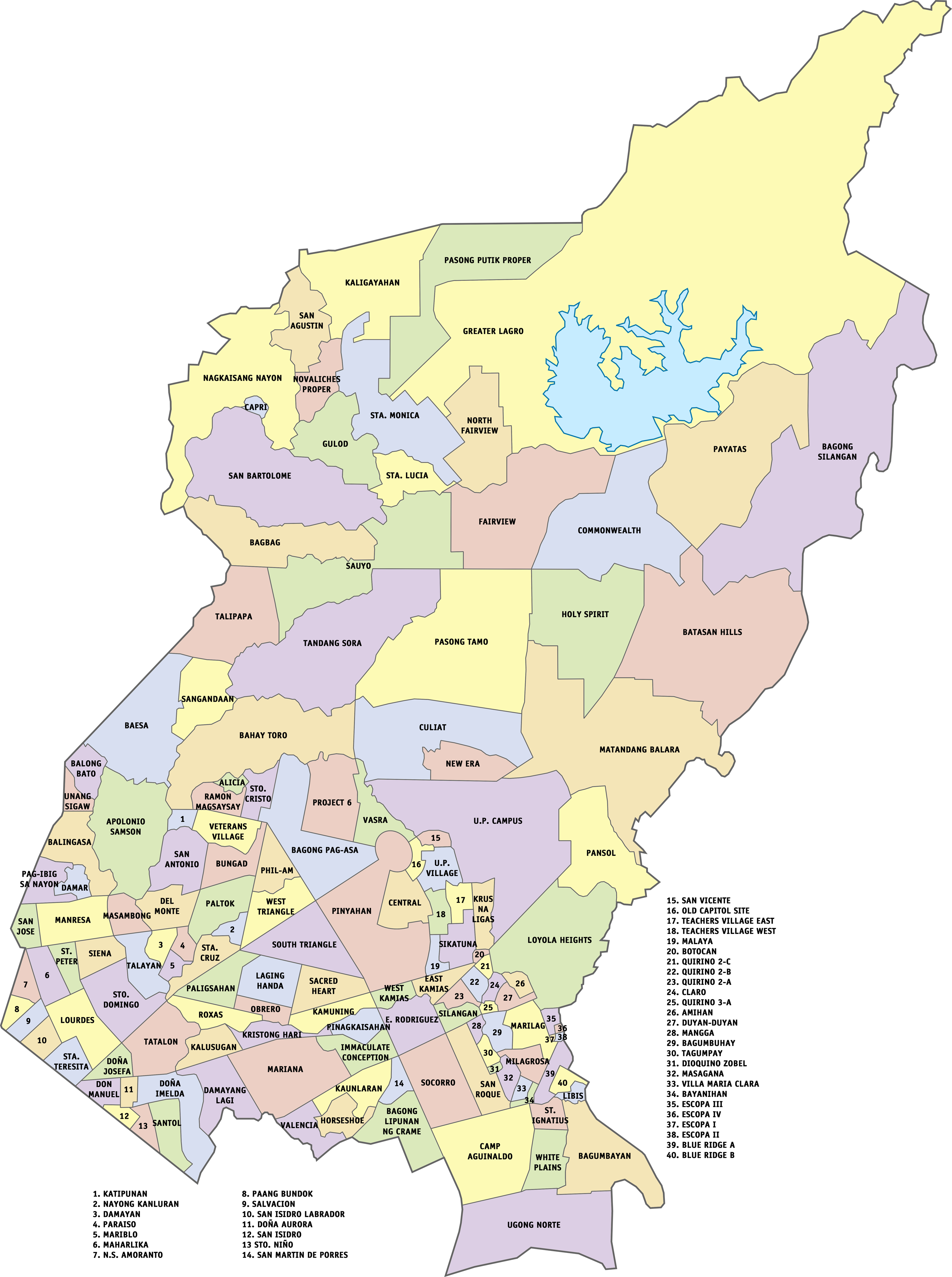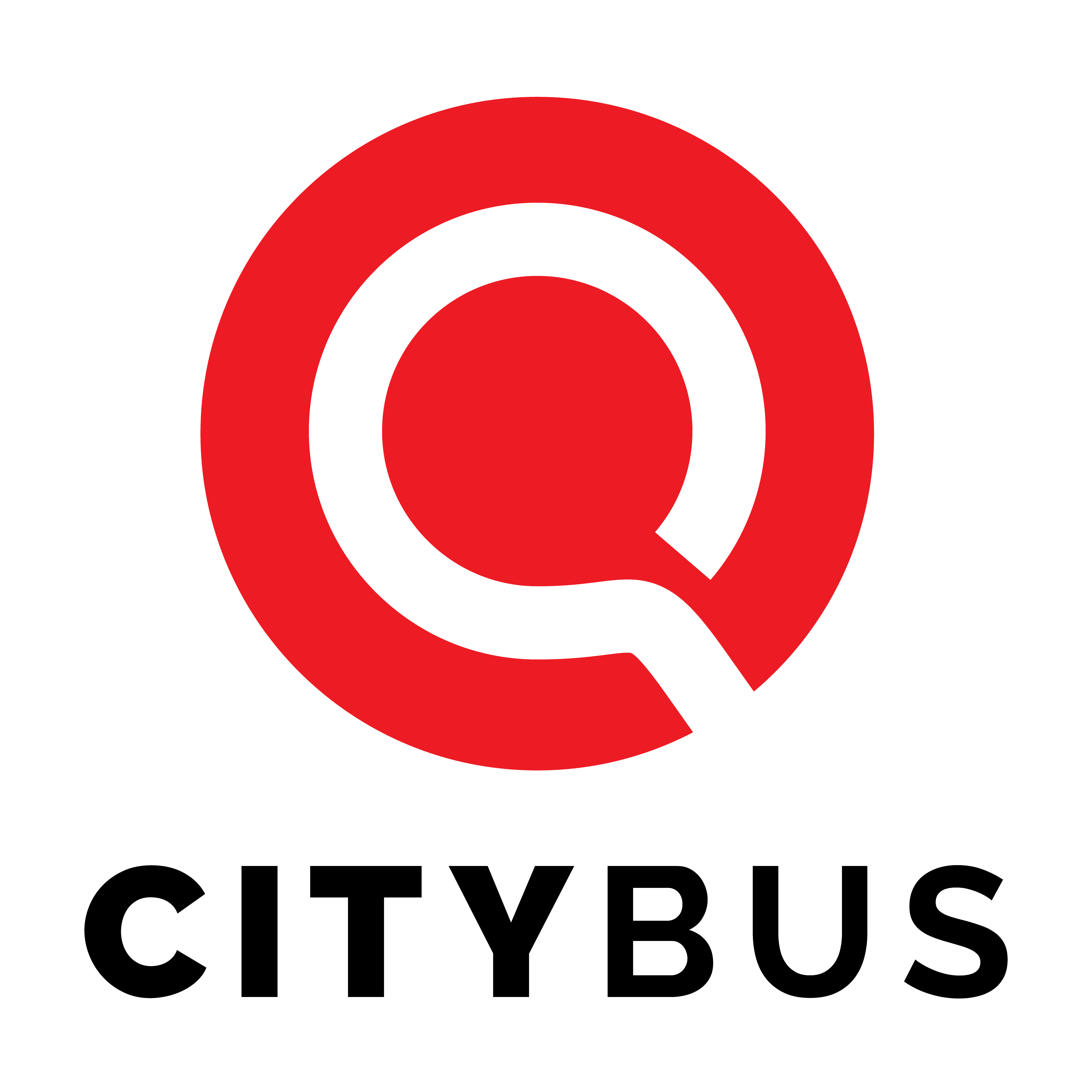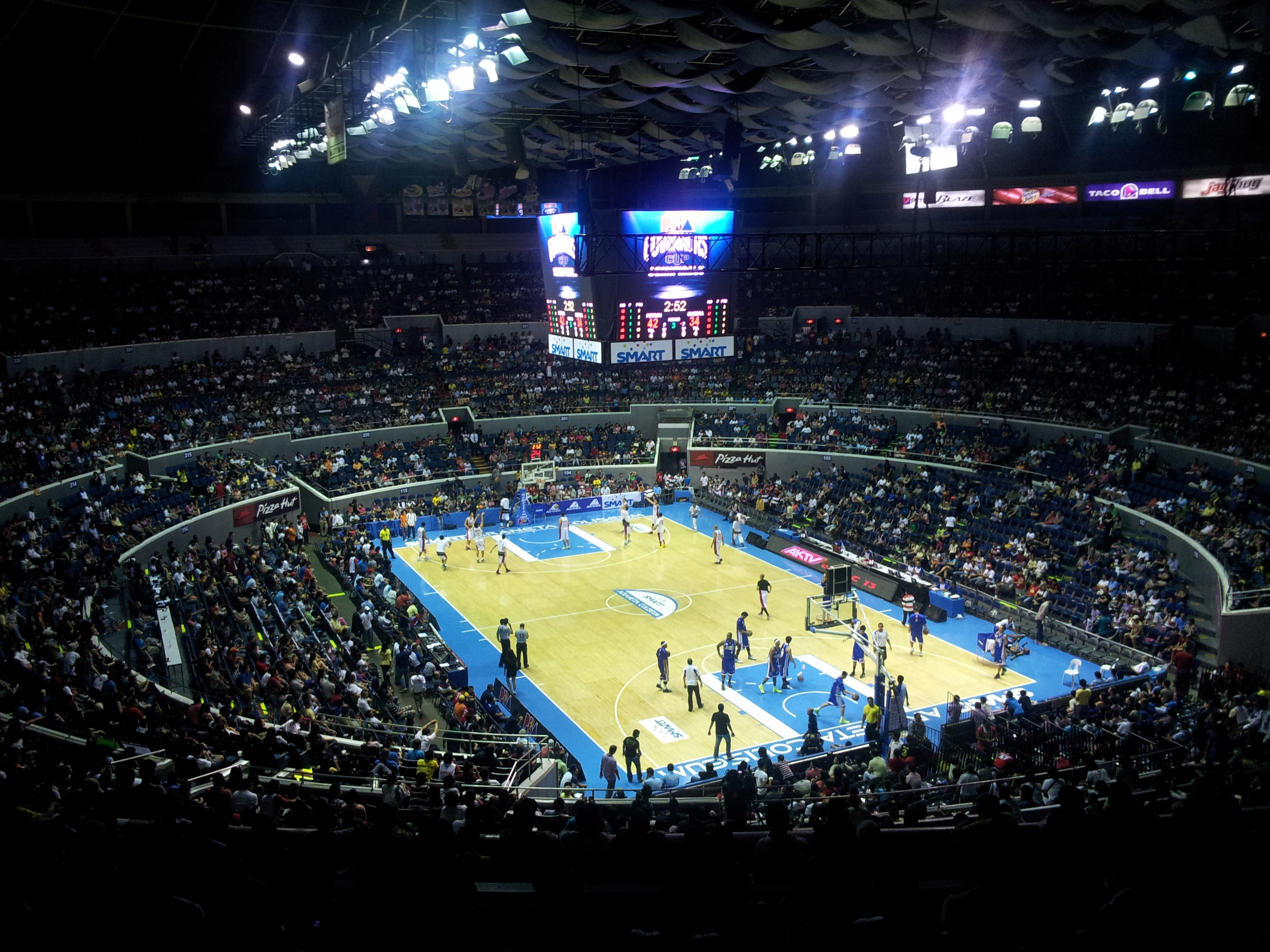|
Barangays Of Quezon City
Quezon City, the most populous city in the Philippines, is politically subdivided into 142 barangays. All of Quezon City's barangays are classified as urban. These barangays are grouped into six congressional districts, with each district represented by a congressman in the House of Representatives. As of July 2, 2012, President Benigno S. Aquino III signed into law Republic Act No. 10170, dividing and reapportioning the Second District into three legislative districts, namely the Second, Fifth and Sixth Districts. Barangays by district District 1 District 2 District 3 District 4 District 5 District 6 Toponomy of places in Quezon City Each Barangay has a history behind its name. Most of the Barangays in Quezon City are named in honor of the peoples residing in the area, their Barangay Patron Saint, and the land and location features in the area. This can be also subject to corrections and suggestions, as it was an initial map of it. See also * List of popul ... [...More Info...] [...Related Items...] OR: [Wikipedia] [Google] [Baidu] |
Legislative Districts Of Quezon City
The legislative districts of Quezon City are the representations of the highly urbanized city of Quezon City, Quezon in the List of legislatures of the Philippines, various national and local legislatures of the Philippines. At present, the province is represented in the House of Representatives of the Philippines by its six congressional districts, with the districts' representatives being elected every three years. Additionally, each district is allotted six seats in the Quezon City Council, creating a total of thirty-six elective seats in the legislature. History From its creation in 1939 to 1972, Quezon City was represented as part of Rizal (province), Rizal Province, with the western areas that formerly belonged to Caloocan, Mandaluyong, and San Juan, Metro Manila, San Juan voting as part of that province's Legislative districts of Rizal#1907–1972, first district, and the eastern areas that formerly belonged to Marikina, Montalban (now Rodriguez, Rizal, Rodriguez), Pasig, ... [...More Info...] [...Related Items...] OR: [Wikipedia] [Google] [Baidu] |
Santa Cruz, Quezon City
Santa Cruz often abbreviated as Sta. Cruz is a barangay located in the San Francisco del Monte, San Francisco Del Monte district of Quezon City with an approximate land area of 44 hectares bounded by South and West Triangles in the East, Quezon Avenue and Barangay Paligsahan in the South, Nayong Kanluran in the Northeast and Barangay Paltok in the North. Neighboring barangays include Mariblo, Paraiso, Paltok, Talayan, Sto. Domingo, Paligsahan, West and South Triangles under the Legislative districts of Quezon City#1st District, first and fourth Legislative districts in Quezon City, Metro Manila, Philippines. Its barangay hall is located near Mariblo bridge, separating the area with Barangay Mariblo. Landmarks Fisher Mall, the former Pantranco bus terminal site, is located at the corner of Roosevelt Avenue, Quezon City, Roosevelt and Quezon Avenues, while Halili School of Ballet and Phoenix Publishing House are found along Quezon Avenue. PMI Colleges also has presence in the are ... [...More Info...] [...Related Items...] OR: [Wikipedia] [Google] [Baidu] |
Bagong Lipunan Ng Crame
Quezon City, the most populous city in the Philippines, is politically subdivided into 142 barangays. All of Quezon City's barangays are classified as urban. These barangays are grouped into six congressional districts, with each district represented by a congressman in the House of Representatives. As of July 2, 2012, President Benigno S. Aquino III signed into law Republic Act No. 10170, dividing and reapportioning the Second District into three legislative districts, namely the Second, Fifth and Sixth Districts. Barangays by district District 1 District 2 District 3 District 4 District 5 District 6 Toponomy of places in Quezon City Each Barangay has a history behind its name. Most of the Barangays in Quezon City are named in honor of the peoples residing in the area, their Barangay Patron Saint, and the land and location features in the area. This can be also subject to corrections and suggestions, as it was an initial map of it. See also * List of popul ... [...More Info...] [...Related Items...] OR: [Wikipedia] [Google] [Baidu] |
Araneta City
Araneta City (stylized in all lowercase), formerly and still commonly known as Araneta Center, is a Transit-oriented development, transit oriented, commercial Mixed-use development, mixed-use urban development in Quezon City, Philippines. Situated in Barangay Socorro, Quezon City, Socorro in Quezon City#Cubao, Cubao, and at the intersection of two major roads, EDSA, Epifanio de los Santos Avenue (EDSA) and Aurora Boulevard, the area offers a mixture of retail, dining, entertainment, residential, office, lodging and parking facilities throughout the complex and hosts over 1 million people daily, due to its close proximity residential areas and transport terminals, including the railway stations of the Araneta Center–Cubao station (Line 3), MRT Line 3 and the Araneta Center–Cubao station (Line 2), LRT Line 2 stations. Located within the complex are key structures such as the Gateway Mall (Araneta Center), Gateway Malls, the Smart Araneta Coliseum, Araneta Coliseum, the New Fr ... [...More Info...] [...Related Items...] OR: [Wikipedia] [Google] [Baidu] |
Socorro, Quezon City
Socorro (PSGC137404115) is a barangay located in Quezon City, Philippines, within the commercial district of Cubao. As of the 2019 census, the barangay has a population of 25,073 people. The barangay is home to Araneta City and Smart Araneta Coliseum, one of the largest indoor arenas in the world. Etymology Socorro, derived from the Portuguese- Spanish word '' socorro'' ("succor"), which means "help" or "relief", is named after its patron saint, Our Lady of Perpetual Help. History Barrio Socorro was established on November 6, 1961, pursuant to City Ordinance No. 61–4883, signed and issued by Norberto S. Amoranto, the then mayor of Quezon City. It was created as a barangay on September 21, 1974, pursuant to Presidential decree no. 557 of President Ferdinand Marcos, 'declaring all barrios in the Philippines as barangays'. By the enactment of Republic Act No. 7160 (Local Government Code), the barangay was given more powers, duties, and responsibilities as the most basic go ... [...More Info...] [...Related Items...] OR: [Wikipedia] [Google] [Baidu] |
Pansol, Quezon City
Pansol is a barangay of Quezon City. According to the 2020 Census, it has a population of 35,254 people. History Pansol was originally a sitio of Balara, a barrio originally part of Marikina. It was carved out of Marikina in 1939, pursuant to Commonwealth Act No. 502 that created Quezon City Quezon City (, ; ), also known as the City of Quezon and Q.C. (read and pronounced in Filipino language, Filipino as Kyusi), is the richest and List of cities in the Philippines, most populous city in the Philippines. According to the 2020 c .... Geography Pansol has an area of approximately . References Quezon City Barangays of Quezon City Barangays of Metro Manila {{MetroManila-geo-stub ... [...More Info...] [...Related Items...] OR: [Wikipedia] [Google] [Baidu] |
Technological Institute Of The Philippines
The Technological Institute of the Philippines (T.I.P.; ) is a private, non-sectarian institution with three campuses located in Metro Manila. It was founded in Manila on February 8, 1962, by a group of educators led by Demetrio A. Quirino Jr. and his wife Teresita U. Quirino. As of 2025, the founders' daughter, Elizabeth Quirino-Lahoz, is serving as chairperson; and her firstborn son, Angelo Quirino Lahoz, is serving as president. While touted as an engineering school, T.I.P also offers undergraduate programs in computer-related studies, architecture, business administration, teacher education, English studies, and political science Political science is the scientific study of politics. It is a social science dealing with systems of governance and Power (social and political), power, and the analysis of political activities, political philosophy, political thought, polit .... Similarly, T.I.P offers enrollments to senior high school and graduate studies in select engi ... [...More Info...] [...Related Items...] OR: [Wikipedia] [Google] [Baidu] |
Loyola Heights
Loyola Heights is a barangay of Quezon City. According to the 2021 Census, it has a population of 21,140 people. It is an affluent district, containing high-end gated communities such as the Loyola Grand Villas, Xavierville, and Alta Vista Subdivision. It is the home to prestigious universities such as Ateneo de Manila University and Miriam College. It was established on September 26, 1960, through City Ordinance No. 60-4512, which created the Barrio of Loyola Heights. It was named after Ignatius of Loyola, the founder of the Society of Jesus The Society of Jesus (; abbreviation: S.J. or SJ), also known as the Jesuit Order or the Jesuits ( ; ), is a religious order of clerics regular of pontifical right for men in the Catholic Church headquartered in Rome. It was founded in 1540 ... or Jesuits that also runs the Ateneo de Manila University. Geography A segment of the West Valley Fault traverses Loyola Heights. References Quezon City Barangays of Quezon City ... [...More Info...] [...Related Items...] OR: [Wikipedia] [Google] [Baidu] |
Armed Forces Of The Philippines
The Armed Forces of the Philippines (AFP) () are the military forces of the Philippines. It consists of three main service branches; the Philippine Army, Army, the Philippine Air Force, Air Force, and the Philippine Navy, Navy (including the Philippine Marine Corps, Marine Corps). The President of the Philippines is the Commander-in-Chief of the Armed Forces of the Philippines, Commander-in-Chief of the AFP and forms military policy with the Department of National Defense (Philippines), Department of National Defense, an executive department acting as the principal organ by which military policy is carried out, while the Chief of Staff of the Armed Forces of the Philippines serves as the overall commander and the highest-ranking officer in the AFP. Founded under the National Defense Act of 1935, while tracing its roots to the Philippine Revolutionary Army, the AFP has played an integral part in the country's history. The AFP has also been involved in various conflicts, such as ... [...More Info...] [...Related Items...] OR: [Wikipedia] [Google] [Baidu] |
Camp Aguinaldo
Camp General Emilio Aguinaldo (CGEA; formerly Camp Murphy), also known as Camp Aguinaldo, is the site of the general headquarters (GHQ) of the Armed Forces of the Philippines (AFP). It is located in Quezon City along EDSA, a major thoroughfare of the metropolis, to which it is across Camp Crame, the national headquarters (NHQ) of the Philippine National Police (PNP). The military installation is named after Philippine revolutionary leader Emilio Aguinaldo, who became the first Philippine president and fought in the Philippine Revolution, the Spanish–American War, and the Philippine–American War. Land The combined areas of both Camp Aguinaldo and Camp Crame covers a total land area of , with being part of a deed of donation from the Ortigas and Company Partnership Limited in the 1950s. The company had originally acquired these lands as estate holdings from the Augustinian Order, such as the ''Hacienda de Mandaluyon''. Camp Aguinaldo occupies of this total area, of which ... [...More Info...] [...Related Items...] OR: [Wikipedia] [Google] [Baidu] |
Eastwood City
Eastwood City is an mixed-use development complex located in Barangay Bagumbayan, Quezon City. Launched in 1997, it is Megaworld Corporation’s first “live-work-play” community that is known to offer complete facilities, amenities, and establishments for living, working, entertainment, and shopping. It is home to the largest business process outsourcing (BPO) locators, Eastwood City is the country’s first IT park and the first project to be granted special economic zone status by the Philippine Economic Zone Authority (PEZA). Since its establishment as a premier Cyberpark, it has become a top employer and leading dollar-earner in the Philippines. Apart from being a business community, Eastwood City is also a residential community with 19 high-rise residential towers. Eastwood is also an Accredited Tourism Entertainment Complex by the Department of Tourism. Eastwood City has been considered to offer families, professionals and urbanites a variety of shopping, dining and ... [...More Info...] [...Related Items...] OR: [Wikipedia] [Google] [Baidu] |
Payatas
Payatas is an administrative division in eastern Metro Manila, the Philippines. It is an urban barangay located in the 2nd district of Quezon City adjacent to the barangays of Commonwealth, Batasan Hills and Bagong Silangan. Etymology The name Payatas derived from the word ''payat sa taas'' (), which describes the soil located in the upper part of Tullahan River, unsuitable for planting rice. History Payatas was part of San Mateo, Rizal until it was ceded to Quezon City in 1949. On July 4, 1974, pursuant to Presidential Decree No. 86 as amended Presidential Decree No. 86-A, portion of the community known as ZONE 108 – Commonwealth in Quezon City, which is not a barrio but, having sufficient population and definite jurisdiction, organized itself into a barangay known as Barangay No. 8 and elected an official who took their oath before Hon. Eduardo Soliman Jr. On September 21, 1974, Presidential Decree No. 557 was promulgated, declaring among other things that in the ... [...More Info...] [...Related Items...] OR: [Wikipedia] [Google] [Baidu] |



